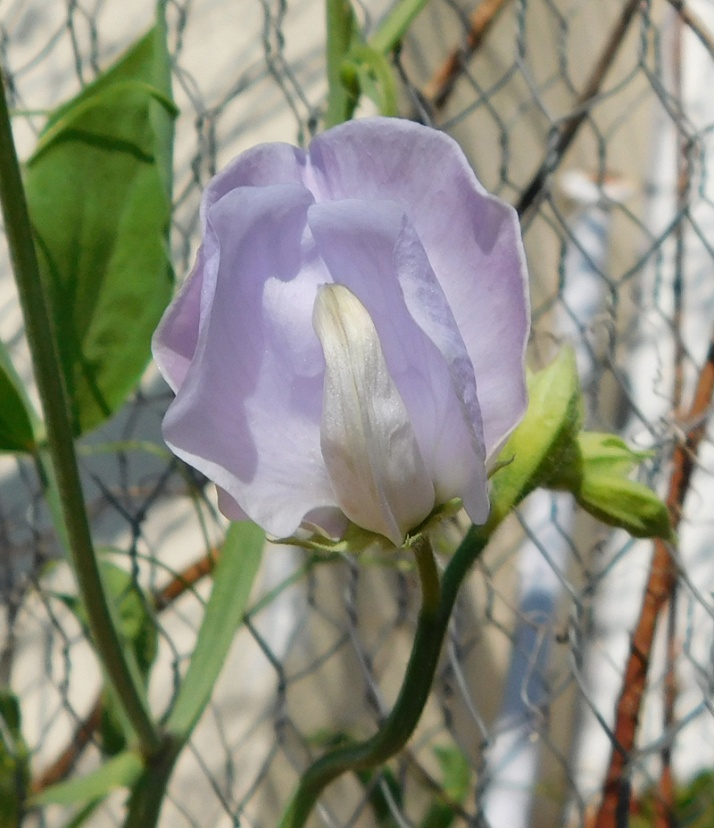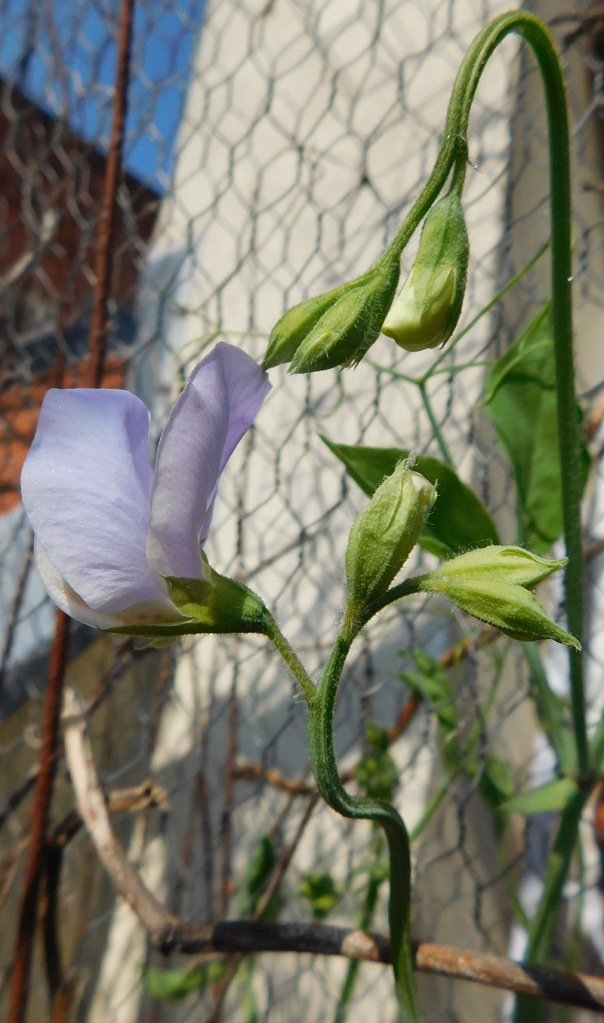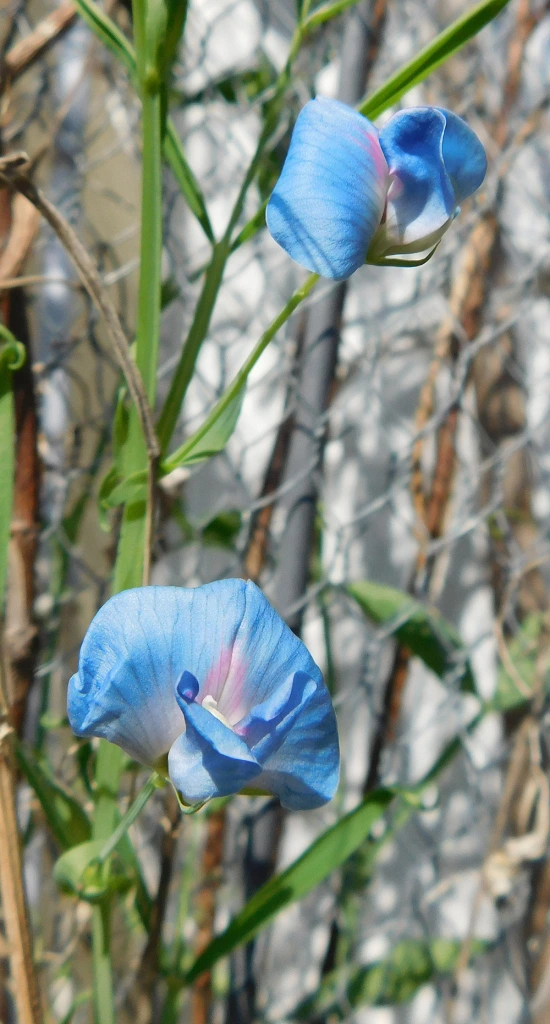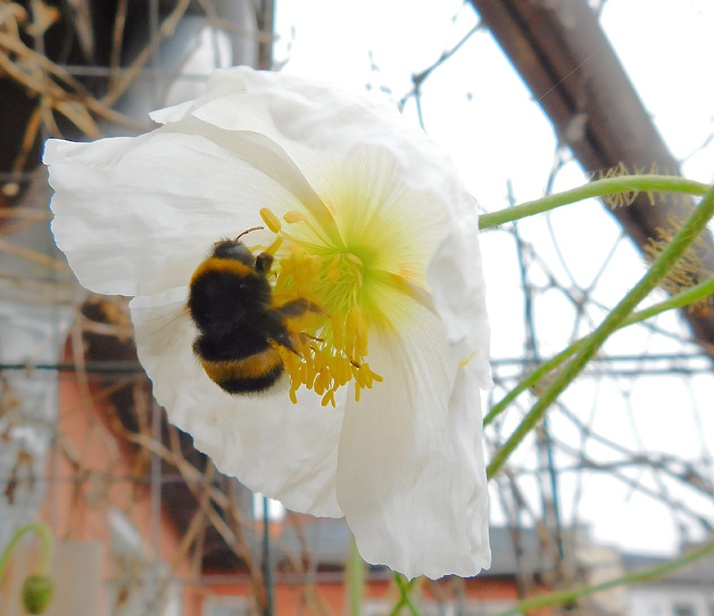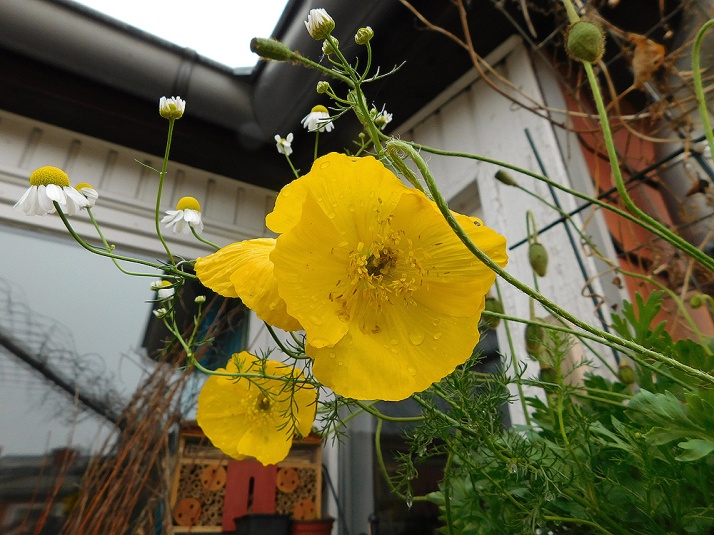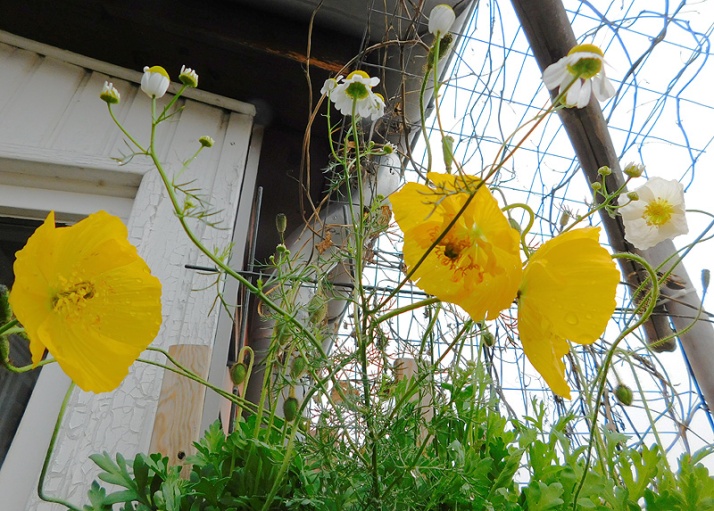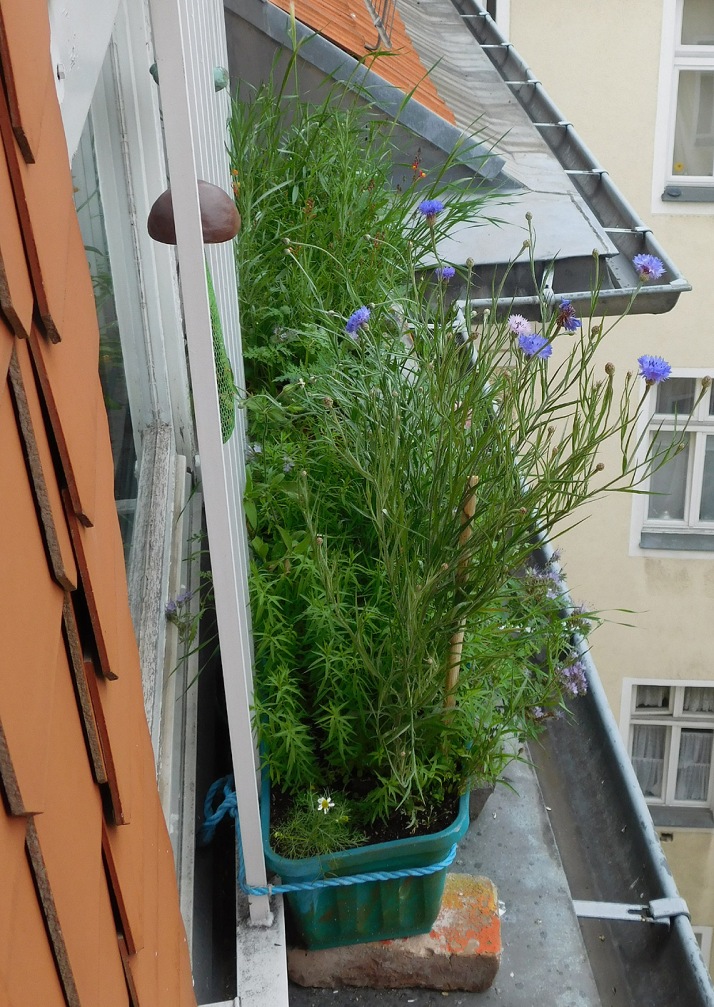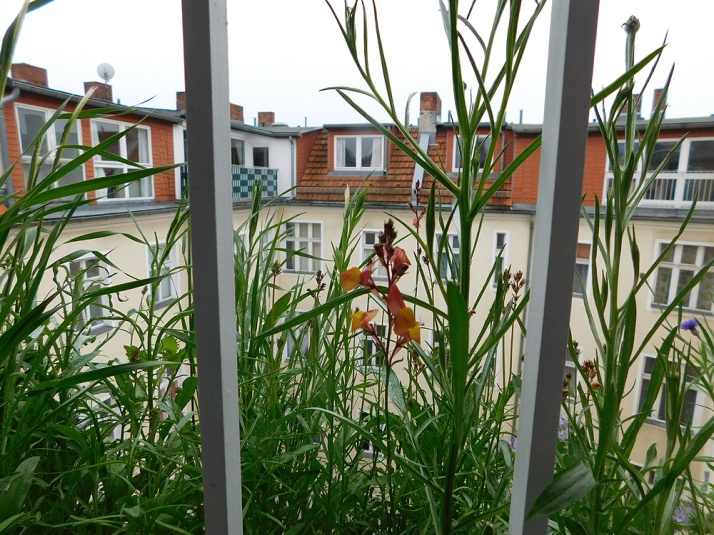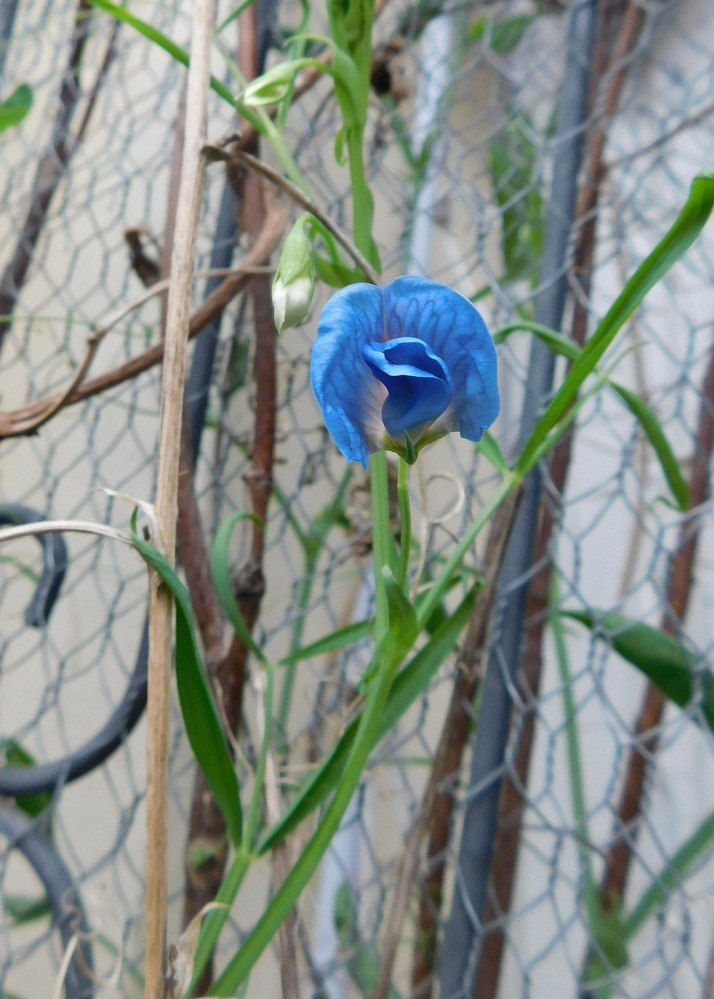… has finally arrived. It is Solstice Light Blue, an early multiflora variety.
It looks not very blue so far, but silvery-lavender. The scent is underwhelming, too. It was sown on the 3rd of March and planted outside a month later. According to Roger Parsons Website, it was “raised by David Lemon and introduced in 2008”. It is my 1st multiflora variety and I expected them to show up much sooner. Maybe I put them outside too late. Or the intense cold spell a few weeks ago stunted their development. The temperatures did change drastically throughout the month.
The bluest Lathyrus of them all is now really starting to show it’s azure glory:
The Chickling Pea hast been cultivated for food and fodder since ancient times – seeds were found in prehistoric settlements in Egypt, Bosnia and the Middle East. The Romans described several varieties, too. In Germany it has only been grown since the early 16th century. It is mainly grown for fodder, but in some countries – Spain and Italy for instance – it is also used in several dishes. In some regions of Germany, people use “Platterbsen” for stews and soups (only the white seeds). I have not tried that yet. The taste is described as a mixture between chickpeas and beans. Consuming Chickling Peas in larger quantities is dangerous though, because it can lead to “lathyrism” – a nasty neurodegenerative disease – caused by the alkaloid lathyrin.
The blossoms are rather small, about half the size of a grandiflora (old-fashioned) sweet pea. But the vibrant colour makes up for it (same as the neon-yellow Lathyrus chloranthus). On my balcony both species self-sow.
